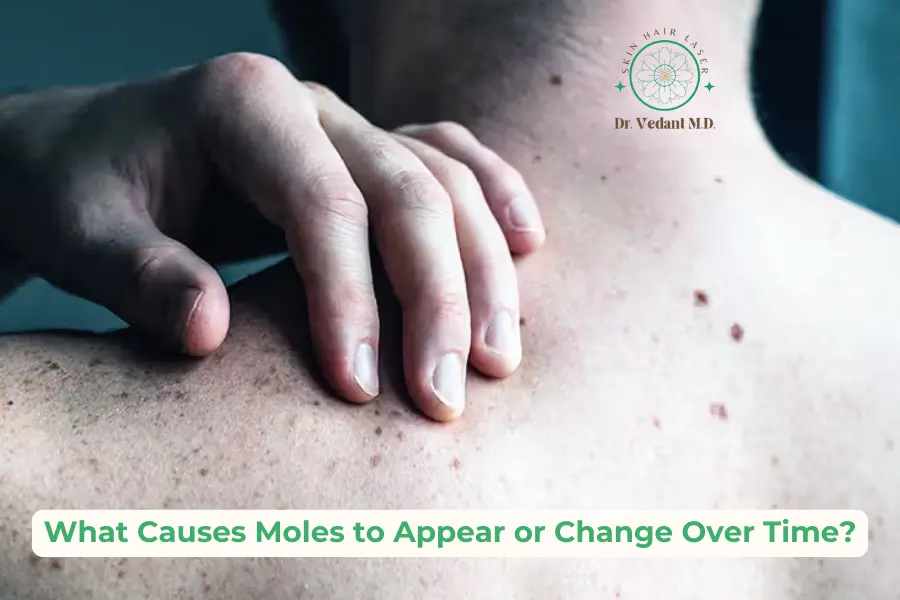
Moles, those little pigmented marks on our skin, are really common. Most people have between 10 and 40 moles on their bodies and can develop at any point in their lives. When it comes to moles, there are several questions that come to mind, such as: what makes moles appear, and why do they sometimes change in dimension, colour, or shape as we mature?
In this blog, Dr. Vedant Ghuse, a trusted dermatologist near me for skin, answers these questions and shares why moles develop and how they change over time.
Moles are collections of pigment-producing cells called melanocytes. Instead of these melanocytes being evenly distributed, in moles, they cluster and produce a visible spot. Moles come in different forms, like they can be flat or raised, brown, black, pink, or even flesh color. While most moles are benign, there are some characteristics of changes in their presentation that we look at as suspicious for skin conditions, including melanoma (a type of skin cancer).
Your genes are an important driver of the number of moles you develop. If your parents have many moles, you probably will, too. Some people simply have a genetic tendency to develop more moles as they age.
New moles can be developed through exposure to UV radiation and even tanning beds. UV rays stimulate melanocytes to produce more pigment, which can result in them clustering together to create a mole. This is why you often develop more moles in sun-exposed areas.
Hormones can influence mole development. Here are a couple of examples:
According to Dr. Ghuse, the best skin dermatologist near me, moles can change over time. Some may fade while others can become raised or wrinkled. Changes are typically benign; however, it's wise to keep a watchful eye on their appearance, especially for adults, when skin cancer risk is more evident.
Some normal changes in moles include:
However, noticing sudden or dramatic changes make a trip to the dermatologist necessary. It's also important to follow the ABCDE rule:
While most moles are completely benign, you need to check with your dermatologist if:
Moles are normal, often influenced by genetics, sun exposure and hormones. While they are mostly harmless, it is best to stay aware and check for changes; that way, if something does come up, it is hopefully caught early. Annual skin checks, both self-skin checks in addition to annual derm checks, are your best way to maintain skin health and peace of mind. Book an appointment with Dr Vedant Ghuse, the best skin and hair specialist near me today!